#Paul Groves
Text
Don Giovanni
Bryn Terfel, Renée Fleming, Ferruccio Furlanetto, Solveig Kringelborn, Paul Groves, Hei-Kyung Hong, John Relyea, Sergei Koptchak
The Metropolitan Opera Orchestra and Chorus, James Levine
Production by Franco Zeffirelli, 2000
Act 1 - E. Don Giovanni's ballroom - 2. Finale Act 1
Soon Zerlina scream is heard; Elvira, Anna and Ottavio, as well as Masetto, make to rescue her. Giovanni re-enters, dragging Leporello and denouncing him as the miscreant. No one, however, believe him, and Act 1 ends in confusion, with Elvira, Anna and Ottavio facing Giovanni and calling down vengeance upon him.

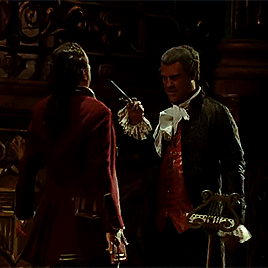
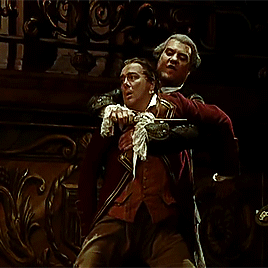


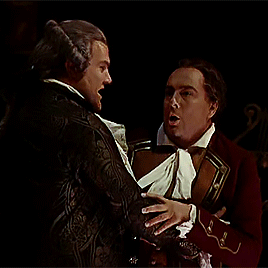


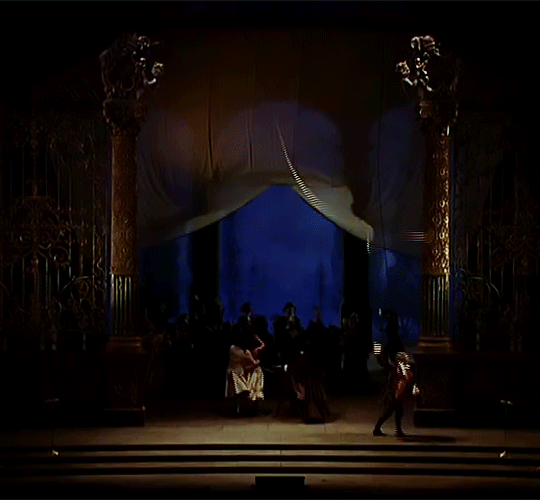
Index - Next Scene
#GIFetto#Don Giovanni#wolfgang amadeus mozart#orchestra#Opera#Donna Anna#Renée Fleming#Don Ottavio#Paul Groves#Donna Elvira#Solveig Kringelborn#Bryn Terfel#Masetto#John Relyea#Zerlina#Hei-Kyung Hong#Leporello#Ferruccio Furlanetto#Met Opera
4 notes
·
View notes
Text

Frantz Fanon, (1961, 1963), The Wretched of the Earth, Foreword by Jean-Paul Sartre, Translated by Constance Farrington, Grove Press, New York, NY, 1968, pp. 311-316

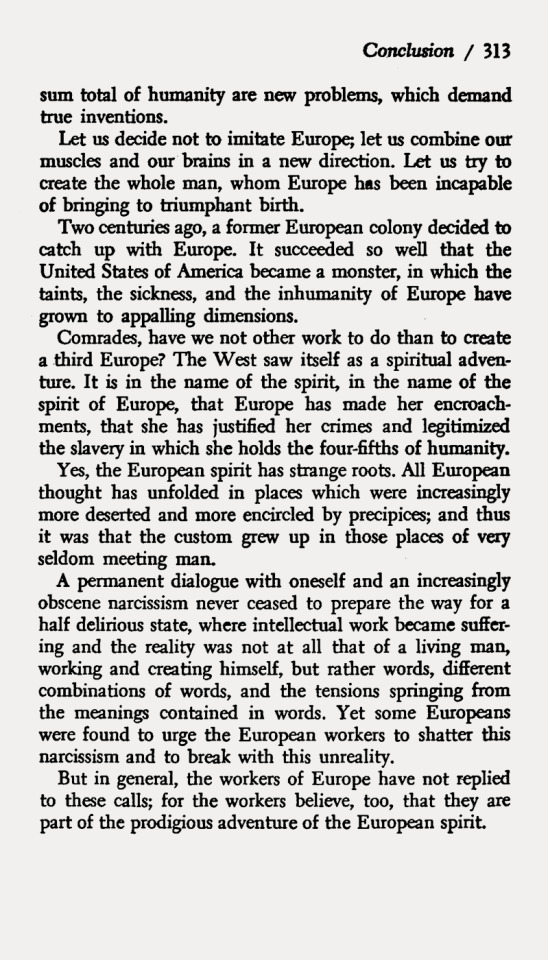



«That same Europe where they were never done talking of Man, and where they never stopped proclaiming that they were only anxious for the welfare of Man: today we know with what sufferings humanity has paid for every one of their triumphs of the mind.» – (p. 312)
#graphic design#book#cover#book cover#frantz fanon#jean paul sartre#constance farrington#grove press#1960s
41 notes
·
View notes
Text

Portobello rd 1984
More amendments…not 77 but around 84 in the Crap years..and west London opinion is that not down the market as maybe too narrow for the bella. Maybe Berwick st market in Soho. Great photo all the same
#clash city rockers#the clash#notting hill#how we grew up#laylow ladbroke grove#paul simonon#joe strummer
45 notes
·
View notes
Text

4 notes
·
View notes
Text
bloody hot characters covered in the good old fake haemoglobin — a hot and gory thread (1/?)
Father Paul Hill | Monsignor John Pruitt in Midnight Mass
Performed by Hamish Linklater

Roman Godfrey in Hemlock Grove
Performed by Bill Skarsgard

Thomas Shelby in Peaky Blinders
Performed by Cillian Murphy

Dr. Hannibal Lecter in Hannibal
Performed by Mads Mikkelsen
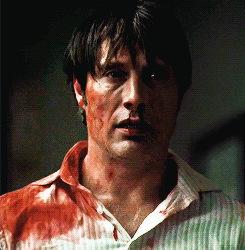
Marc Spector | Steven Grant in Moon Knight
Performed by Oscar Isaac

Murdoc in MacGyver
Performed by David Dastmalchian

Clara Webb in Byzantium
Performed by Gemma Arterton
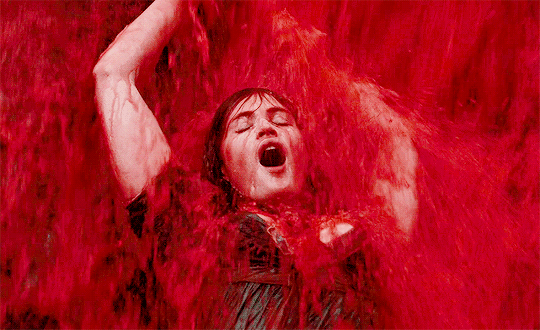
Adelaide Wilson in Us
Performed by Lupita Nyong'o

Escherich in Alone in Berlin
Performed by Daniel Brühl

Suzy Bannion in Suspiria (2018)
Performed by Dakota Johnson

Part 02 here! — Part 03 Here
#father paul#monsignor pruitt#midnight mass#hamish linklater#roman godfrey#hemlock grove#bill skarsgard#thomas shelby#tommy shelby#peaky blinders#cillian murphy#dr hannibal lecter#hannibal#mads mikkelsen#marc spector#steven grant#moon knight#oscar isaac#dennis murdoc#macgyver murdoc#macgyver#david dastmalchian#clara webb#byzantium#gemma arterton#adelaide wilson#us#murdoc macgyver#lupita nyong'o
157 notes
·
View notes
Text
'An expansive book that is meticulously detailed about Oppenheimer’s entire life and more, American Prometheus can intimidate any filmmaker into biting more than they can chew. The first watch was drenched in excitement and anxiety about discovering what Nolan does to the book in his screenplay. I recognized that two individuals are bound to perceive a text in two different ways. Therefore, if Oppenheimer’s screenplay fell short of my expectations, it was primarily because I wanted to see the entire book unfold before me or the parts of it I deemed more important than others.
This is a concern that now exists for any film derived from a text that we have read. However, I could watch Oppenheimer the second time without the baggage of its source material. And subsequently, I am bound to conclude that this is Nolan’s finest screenplay. It achieves much more than one might feel because Oppenheimer is about our world.
One-half of the screenplay from Oppenheimer’s perspective is colored by his subjectivity. The choice to have a first-person script builds the subjective bias into the narrative, but this subjective bias is not of the filmmaker but of the subject himself. As a result, the subject’s passivity, pretense, and performity get exposed to the audience. Think of the sequence in which the statesmen and leaders choose from a list of 12 cities the sites to detonate the first couple of bombs. Oppenheimer has denied lobbying against the use of the bomb and is conforming to the military leaders who have allowed him the opportunity to secure a formidable reputation.
Oppenheimer goes silent on his own accord as Groves interrupts him from mentioning the concern of the scientists, and the sequence ends. The abrupt cut doesn’t allow the audience to seethe at the early genocidal tendencies of the militarists, including Oppenheimer, because, for Oppenheimer, the conversation has ended. In another sequence, he convinces Rabi to join the team after the latter’s refusal to be a part of a programme that reduces “three centuries of physics into a weapon of mass destruction,” and Rabi’s discomfort gets shadowed completely by Oppenheimer’s words, which he views to be a closing note. The film is replete with such sequences, which contribute to revealing Oppenheimer’s self-importance and how he rationalized his role in each circumstance.
What I have mentioned above doesn’t sound extraordinarily important per se. It becomes meaningful only because we have the other half of the screenplay, a partially objective one that sees beyond Oppenheimer’s line of sight. This other half prevents the colored half from amounting to the subject’s glorification. This part of the screenplay is about the impact of Oppenheimer’s actions, words, and a display of his political myopia. It is to establish that Oppenheimer got blinded by his sense of self-brilliance to the point that he never stood for something other than feeding his self-repute. In addition to the black-and-white sequences, all the film’s characters confront Oppenheimer in various circumstances. These sequences compel us to agree with all the people who occupy the antagonistic spaces in the narrative and those who are by the subject’s side.
We hate Strauss’ conservatism and abuse of power, but we agree with him when he says Oppenheimer would do everything all over again if given the choice because he serves himself. He has never apologized for the bombings despite the guilt complex. We hate Truman for having bombed Japan, but we agree with him grounding Oppenheimer by telling him that Hiroshima is not about him. We hate Teller for being envious of Oppenheimer and lobbying for a genocidal H-bomb. Still, we agree when he asks Oppenheimer what he believes in or when he destroys Oppenheimer’s idea that a nuclear bomb will end all wars. And we agree with Kitty when she chides him for thinking the world will feel sorry for him when he experiences the consequences of his sins. The dialogue is prophetic in nature. Oppenheimer is seen betraying everything he says he stands for or is.
At the same time, none of the sequences disprove or disagree with Oppenheimer. Roger Robb rightly grills the subject for having many moral scruples in 1949 despite not having any in 1945 when the bombs were used. And Oppenheimer rightly points out that it’s because he now knew his country would use any weapon it had. It’s a single line summarising America’s military-industrial complex and invalidating all its claims of ending the war and ensuring global peace.
In real life, Oppenheimer never recognized his guilt. But his actions betrayed what he thought. Serious geopolitical concerns further inflated the guilt complex. All of them are valid. In the end, we come out knowing that Oppenheimer’s role in making the bomb was inevitable, his refusal to prevent its use was his crime in conformity, and the assassination of his credibility was a counter-crime against him, reflecting America’s rabid anti-communist temperament. The subject is a perpetrator and a victim, both. And his conformity is foundational to both the roles he occupies.
Kitty’s objection to it also exposes conformity. And after its exposition, it is criticized within the film with the argument that he is trying to martyr himself with silence. The film is about exposing Oppenheimer’s shortcomings, criticizing them, and through his victimization, revealing the violence America has made systematic. We must understand that the subject was a victim of political violence, which has been integral to the mechanisms of his nation-state.
But even the recognition of his victimhood is not without his criticism. When Albert Einstein tells Oppenheimer that when the state rehabilitates him, it will be a self-serving act of their rehabilitation to whitewash power abuse that once happened (and perpetually happens) in Washington, he does so by reminding him of what the community did to Einstein when they honored him as the greatest physicist since Newton.
All being said, the film’s greatest achievement isn’t solely in a screenplay that criticizes its subject in the act of exploration. It is in establishing the omnipresent vulnerability to life in a post-nuclear world. Numerous films have vocally discussed the nuclear holocaust. Numerous films have cautioned against using nuclear weapons and advocated for disarmament. But numerous films have also addressed the misery in the aftermath of Hiroshima and Nagasaki or have conceptualized possible misery from theory. Oppenheimer doesn’t rely on a graphic presentation to establish, with its conclusion, the vulnerability of everyday life to actions of aggressive states. America has proven again and again that violence is its behavior.
Violence is how it deals with the world. It invades, plunders, and kills states. It destabilises economies. Moreover, it will kill its own to prevent the spread of a specific ideology that challenges its foundational tenet. In the cultural space, it subsumes every other culture via appropriation. At a domestic level, it would allow the massacre of its citizens at the rate of 50 per day if it meant profit-generation from the commercial sale of firearms. In our own country, the state has successfully turned the majority against the minority and secured widespread support for its investment in national and domestic security, legitimizing abuse.
The Indian state has become aggressive on the whole. When America dropped the bombs on Japan, it did so to gain geopolitical advantage. And if its position is challenged, it will do so again. But it’s one action that made it imperative for all nations to sow the seeds of their own destruction so that they aren’t threatened with might.
The non-inclusion of the aftermath of bombings on Japanese cities is not an act of willful ignorance but a choice of integrity. Essentially, it is a reflection of Oppenheimer’s weakness in confronting the demon of his making. Additionally, it is a refusal to use the misery of millions as currency to evoke empathy from the audience when the narrative voice is an outsider himself. We shouldn’t feel the dread of nuclear war because of what it did to people in Japan but because it is fundamentally cruel beyond measure, as a nuclear war kills indiscriminately. The idea of committing genocide cannot be a strategic consideration.
The pain of the Japanese people was not a mistake but a calculated choice by the perpetrators. Oppenheimer shielded himself with his reputation to escape accountability for his naivete. The theory could only take him so far, but he chose not to read the sign of the times so that he could remain close to his masters. Oppenheimer is a story of failure, not triumph. The man failed to choose, commit, act, fight, and change, all the while thinking he could do everything. Today, the two scorpions in the bottle of the world possess 90% of all nuclear warheads.
Paul Schrader called Oppenheimer (2023) the most important film of the century, and we may have our reservations against his opinion. But notwithstanding the quality of the movie vis-a-vis the cinema of the 21st century, Oppenheimer (2023) exists as a piercing critique of a creator’s self-serving guilt without accountability, infusion and legitimization of violence in the system, and the USA’s military-industrial complex. This makes it, perhaps, the most important film of the century since There Will Be Blood (2007) until Martin Scorsese comes with Killers of the Flower Moon (2023).'
#Oppenheimer#Christopher Nolan#There Will Be Blood#Flowers of the Killer Moon#American Prometheus#Leslie Groves#Edward Teller#Lewis Strauss#Isidor Issac Rabi#Kitty#Roger Robb#Albert Einstein#Paul Schrader
2 notes
·
View notes
Video
Resort Style Living, Long Island, NY - #stonecreationsoflongisland by Stone Creations of Long Island Pavers & Masonry
Via Flickr:
Resort Vibes in your own backyard - Call (631) 678-6896 - #resortvibes #backyarddesigns #stonecreationsoflongisland #nassaucounty #suffolkcounty #hamptons #longisland
#www.stonecreationsoflongisland.net#Suffolk County Pavers#Stone Creations of Long Island Pavers and Masonry Corp.#Cambridge Pavers#Cambridge Paving Stones#Cambridge Ledgestone Pavers#Brookhaven Masonry#BridgeHamptonNY11932#Nassau County Pavers#PAULSALADINO#Patios Lake Grove NY 11755#Pavers Near Me#Masonry Contractors#Techo-Bloc Pavers#OysterBayNY11771Masonry#Islip Pavers#Islip Brickwork#Paul Saladino 11729#LONGISLANDPAVERS#Kings Park Pavers#Jericho N.Y 11753#Home Improvements 11731#Glen Head N.Y 11545#Pizza Ovens#Outdoor Pizza Oven#Dix Hills#N.Y 11746#Cold Spring Harbor#N.Y 11724#Pavers Centerport NY 11721
0 notes
Text

Stone Creations of Long Island Pavers and Masonry specializes in masonry design and outdoor living, serving communities all across Long Island, Queens and Brooklyn in all aspects of home improvement and repair. From custom brickwork and pavers to asphalt and concrete, Stone Creations of Long Island provides free estimates at your home or business seven days a week. With experienced employees, and a knowledgeable staff, Stone Creations of Long Island knows your home is your greatest investment and choosing the right masonry team to protect and enhance that investment is important. For any inquiries, we look forward to your questions and helping on your next home improvement or commercial project of any scale.
Paul Saladino
Office (631) 678-6896
Visit Our Website : www.stonecreationsoflongisland.net
See our work on You Tube : www.youtube.com/user/stonecreationsLI/videos
Follow us on Twitter : www.twitter.com/stone_creations
Check us out on Pinterest : www.pinterest.com/stonecreations
See Our Work On Houzz : www.houzz.com/pro/stonecreationsoflongisland
Follow our Updates on www.stonecreationslongisland.tumblr.com
Follow us on Wordpress : www.stonecreationsoflongislandinc.wordpress.com
Like us on Facebook : www.facebook.com/stonecreationsoflongisland
Follow us on Instagram : www.instagram.com/stonecreationsoflongislandinc
#www.stonecreationsoflongisland.net#stone creations of long island#stonework#outdoor living#paul saladino#poolscapes#long island pools#longisland#cambridge pavingstones#paver patios#smithtown NY#Bellport Pavers NY 11713#Centereach Pavers NY 11720#Coram Pavers NY 11727#East Setauket NY 11733#East Setauket Pavers NY 11733#Patio and pools Farmingville NY 11738#Pool Patios Lake Grove NY 11755
1 note
·
View note
Text
Connect with the Contractors who can help you to complete Drywall Finishing
0 notes
Video
youtube
LECTURE 7: MEET THE BEATLES (PART 2): Dig this fun clip about George Harrison’s youth. This is a guided tour of George’s birthplace and childhood home, 12 Arnold Grove, located in the Liverpool suburb of Wavertree. The tour guide does a terrific job of covering George’s early life, and leaves off with the Harrison’s moving to a house in the Speke industrial development in 1950, located near where the McCartneys resided. The tour guide also tells the story of George’s first meeting with John Lennon. It’s quite amusing.
0 notes
Text
Wolfgang Amadeus Mozart
Don Giovanni
Bryn Terfel, Renée Fleming, Ferruccio Furlanetto, Solveig Kringelborn, Paul Groves, Hei-Kyung Hong, John Relyea, Sergei Koptchak
The Metropolitan Opera Orchestra and Chorus, James Levine
Production by Franco Zeffirelli, 2000
Act 1 - C. The Open Country - 3. Donna Elvira tries to warn Donna Anna and Don Ottavio
Now Anna and Ottavio enter, and greet Giovanni; Elvira returns, and in the ensuing quartet warns them that Giovanni is a betrayer, in spite of his efforts first to explain that she is unbalanced, then to silence her.
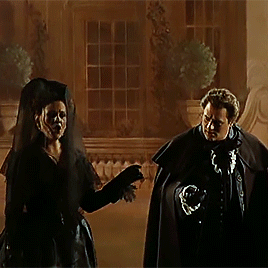
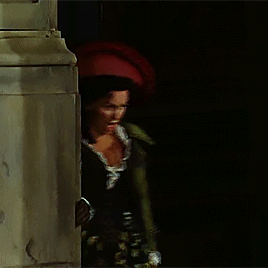
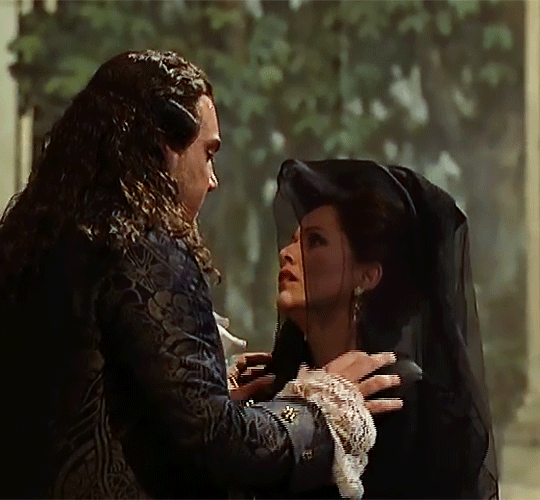
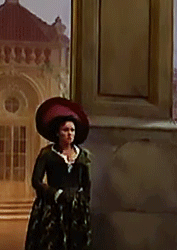
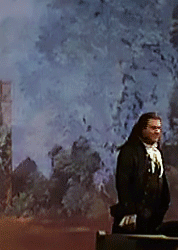
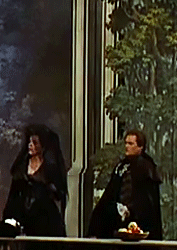




Index - Next Scene
#GIFetto#Don Giovanni#wolfgang amadeus mozart#orchestra#Opera#Donna Anna#Renée Fleming#Don Ottavio#Paul Groves#Donna Elvira#Solveig Kringelborn#Bryn Terfel#Met Opera
4 notes
·
View notes
Text
Part II: The Boon of the Monster Ditch, St. Lucie Canal
Today’s post is the second part of a story. A story from the 1964 50th Anniversary Edition of the Stuart News. “Signalizing Half a Century of Growth and Progress in Martin County, Florida.” It is a huge special edition newspaper, 110 pages!
The article I am sharing is on page 6-H and is titled ” St. Lucie Canal Approved in 1914, Is Boon to Agriculture Here. Huge Citrus Growth Along Water Route;…

View On WordPress
#1964#50th Anniversary Edition of the Stuart News#Bessemer Properties#Early citrus groves Martin County#First citrus groves#gateway to the Everglades#gladiolus#History C-44 Canal#History St Lucie Canal#Is Boon to Agriculture Here. Huge Citrus Growth Along Water Route; Mayaca Groves First.#Monster Ditch#Monster Ditch St Lucie Canal#Part II: The Boon of the Monster Ditch#Paul M. Hoenshel#Phipps company#Port Mayaca#Port Mayaca development#Port Mayaca history#scientific water control#Signalizing Half a Century of Growth and Progress in Martin County#St Lucie Canal#St Lucie Canal Approved in 1914#St Lucie Inlet and harbor#Transcription Thurlow-Lippisch#truck crops#understanding the past for a better water future St Lucie Canal#Valencia oranges martin county fl
0 notes
Text

Oxford st 1979
Adrian Boot foto
17 notes
·
View notes
Text
Found DVDs : Strong Language (2000)
Found DVDs : Strong Language (2000)
Continuing our Found DVDs series, today we’re looking at the 2000 crime comedy : Strong Language. No real spoilers here…
To class this film as a crime comedy is something of a paradox in itself. It would be easier to just class it as a story and leaave it at that. Nevertheless here’s the synopsis:
“While a narrator tells the story of a night of terror that changes his life forever, 16 young…

View On WordPress
#british#david groves#dvd#film#Film review#films#found dvd#geekcrazydiscostu#london#Nerd#old dvd#paul tonkinson#planet dvd#simon rumley#strong language#strong language 2000#strong language film#strong language film review#strong language simon rumley
0 notes
Text
three romanian authors to read with ur dracula daily
dracula is an orientalist text conceived at the height of british empire, grounded in distortions of a region that stoker never visited. sadly (and unsurprisingly) i found very few romanian authors who have been translated into english online, so here’s a meagre list of recs:
1. luminița cioabă
romanian roma author, famous in romania as the daughter of bulibasha (the king of the roma nation), she forged her own path as a writer of short stories in the oral roma tradition which portray in vivid detail the history of the roma people of romania
the birch grove
queen of the night and stone flower
meralda
from her book, the lost country
2. marin sorescu
from humble rural romanian roots, he wrote under the oppressive ceausescu government. in a national ironic tradition he very famously said: "Just as I can't give up smoking because I don't smoke, I can't give up writing because I have no talent." some of my favorite poems:
the sea shell (1983)
carbon paper (1980)
creation (1992)
3. paul celan
jewish poet from bucovina. i recommend this beautiful essay by ilya kaminsky, who like celan was forced to flee eastern europe due to antisemitism, deconstructing various translators’ attempts to adapt celan’s texts and experience of the holocaust. these are all poems from a 1971 poetry collection
all souls
leap-centuries
language mesh and night
homecoming
#dracula daily#dracula#romanian lit#romania#romanian literature#romanian#romanian writers#romani writers#jewish writers#bookblr#recs#please feel free to add if you have any other translation recs
13K notes
·
View notes
Text
'Christopher Nolan’s “Oppenheimer” has already received a handful of strong first reactions, but now comes a huge claim from “Taxi Driver” writer and “The Card Counter” director Paul Schrader. The Oscar nominee attended the New York premiere of Nolan’s atom bomb epic and took to social media afterwards to hail it as “the best, most important film of this century.”
“If you see one film in cinemas this year it should be ‘Oppenheimer,'” Schrader added in a Facebook post shared widely across social media. “I’m not a Nolan groupie but this one blows the door off the hinges.”
“Oppenheimer,” based on the 2005 book “American Prometheus” by Kai Bird and Martin J. Sherwin, tracks the creation of the atomic bomb during World War II through the eyes of theoretical physicist and Manhattan Project leader J. Robert Oppenheimer. Cillian Murphy stars in the lead role. The film also features Matt Damon as Manhattan Project director Gen. Leslie Groves Jr. and Robert Downey Jr. as Lewis Strauss, a founding commissioner of the U.S. Atomic Energy Commission. Emily Blunt, Florence Pugh and Benny Safdie also star.
Bird previously raved about Nolan’s “Oppenheimer” adaptation during a conversation at the Institute for Advanced Study last month.
“I am, at the moment, stunned and emotionally recovering from having seen it,” Bird said. “I think it is going to be a stunning artistic achievement, and I have hopes it will actually stimulate a national, even global conversation about the issues that Oppenheimer was desperate to speak out about — about how to live in the atomic age, how to live with the bomb and about McCarthyism — what it means to be a patriot, and what is the role for a scientist in a society drenched with technology and science, to speak out about public issues.”
“Oppenheimer” opens in theaters nationwide July 21 from Universal Pictures.'
#Oppenheimer#Christopher Nolan#Taxi Driver#The Card Counter#Paul Schrader#Cillian Murphy#Matt Damon#Leslie Groves#Robert Downey Jr.#Lewis Strauss#Emily Blunt#Florence Pugh#Benny Safdie#American Prometheus#Kai Bird#Martin J. Sherwin
2 notes
·
View notes
